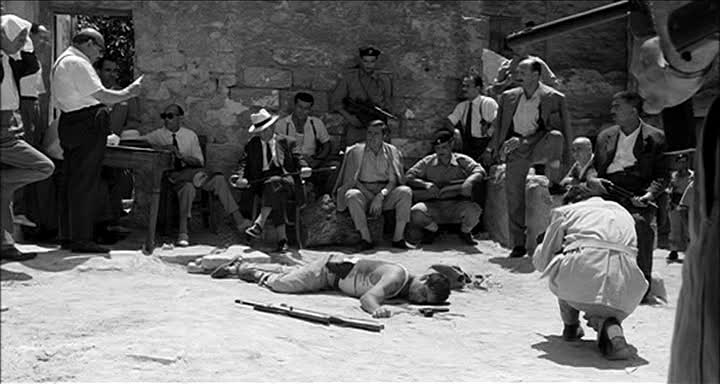By the early 1960s, Italian cinema had sloughed off the privations of World War II. Fellini and Antonioni, once neo-realists, began to pursue more allusive and internal visions, couched in the chic fashions of a renewed Rome.
In that context, it’s perhaps understandable why Francesco Rosi is rarely mentioned in the same breath as those auteurs. His films, best epitomised by Salvatore Giuliano, represent the brutal end point of neo-realism, without the sentimental heroes who once trudged through the broken Italy. Here, the titular character doesn’t even get much screen time. An outlaw fighting a guerrilla war against the Italian government, he’s seen first as a corpse – which is no spoiler: the movie opens with and revolves around his suspicious death – and then later only in the darkness. His is the shadowy presence that galvanises the rest of the film.
With Giuliano lurking on the edge of the frame, Rosi uses a series of minor characters to advance the story – which is a true one, based on the struggle for Sicilian independence following World War II. Some of these figures are so economically drawn it becomes difficult to distinguish them. This sense of confusion isn’t helped by the unannounced flashbacks and flashforwards, taking us from Giuliano’s death, to his guerrilla campaign, then back to the aftermath of his assassination without the benefit of a recognisable character to centre the temporal shenanigans around.
While Rosi’s bid for realism clashes with his more experimental tendencies, the restoration here allows his excellent framing and use of cinematography to shine through; if the film is not wholly satisfactory in narrative terms, then it succeeds on these fronts. Hopefully its release will lead to a reconsideration of Rosi’s place within the canon of post-neo-realist Italian cinema, where he was every bit as relevant as his more famous peers.
